Wenqiang Lei
Sichuan University
E2Edev: Benchmarking Large Language Models in End-to-End Software Development Task
Oct 16, 2025Abstract:E2EDev comprises (i) a fine-grained set of user requirements, (ii) {multiple BDD test scenarios with corresponding Python step implementations for each requirement}, and (iii) a fully automated testing pipeline built on the Behave framework. To ensure its quality while reducing the annotation effort, E2EDev leverages our proposed Human-in-the-Loop Multi-Agent Annotation Framework (HITL-MAA). {By evaluating various E2ESD frameworks and LLM backbones with E2EDev}, our analysis reveals a persistent struggle to effectively solve these tasks, underscoring the critical need for more effective and cost-efficient E2ESD solutions. Our codebase and benchmark are publicly available at https://github.com/SCUNLP/E2EDev.
SCOP: Evaluating the Comprehension Process of Large Language Models from a Cognitive View
Jun 05, 2025

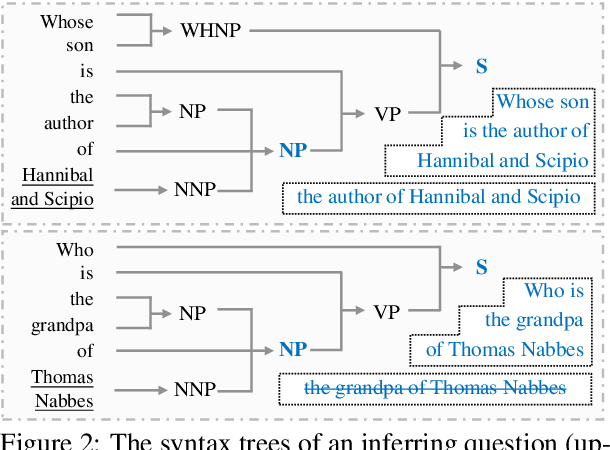

Abstract:Despite the great potential of large language models(LLMs) in machine comprehension, it is still disturbing to fully count on them in real-world scenarios. This is probably because there is no rational explanation for whether the comprehension process of LLMs is aligned with that of experts. In this paper, we propose SCOP to carefully examine how LLMs perform during the comprehension process from a cognitive view. Specifically, it is equipped with a systematical definition of five requisite skills during the comprehension process, a strict framework to construct testing data for these skills, and a detailed analysis of advanced open-sourced and closed-sourced LLMs using the testing data. With SCOP, we find that it is still challenging for LLMs to perform an expert-level comprehension process. Even so, we notice that LLMs share some similarities with experts, e.g., performing better at comprehending local information than global information. Further analysis reveals that LLMs can be somewhat unreliable -- they might reach correct answers through flawed comprehension processes. Based on SCOP, we suggest that one direction for improving LLMs is to focus more on the comprehension process, ensuring all comprehension skills are thoroughly developed during training.
ELABORATION: A Comprehensive Benchmark on Human-LLM Competitive Programming
May 22, 2025
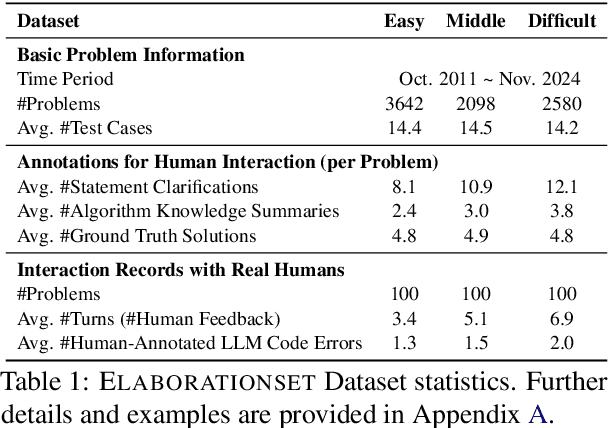

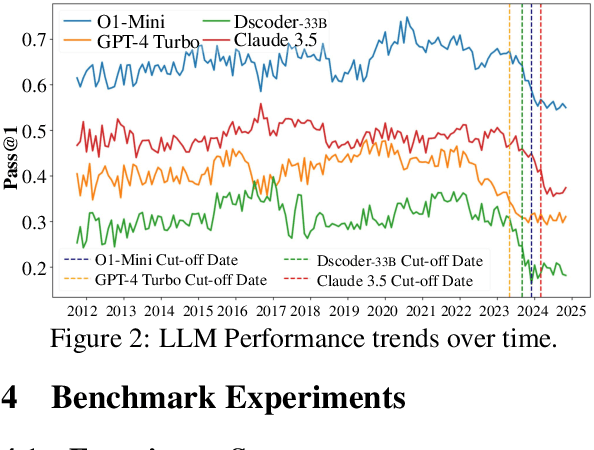
Abstract:While recent research increasingly emphasizes the value of human-LLM collaboration in competitive programming and proposes numerous empirical methods, a comprehensive understanding remains elusive due to the fragmented nature of existing studies and their use of diverse, application-specific human feedback. Thus, our work serves a three-fold purpose: First, we present the first taxonomy of human feedback consolidating the entire programming process, which promotes fine-grained evaluation. Second, we introduce ELABORATIONSET, a novel programming dataset specifically designed for human-LLM collaboration, meticulously annotated to enable large-scale simulated human feedback and facilitate costeffective real human interaction studies. Third, we introduce ELABORATION, a novel benchmark to facilitate a thorough assessment of human-LLM competitive programming. With ELABORATION, we pinpoint strengthes and weaknesses of existing methods, thereby setting the foundation for future improvement. Our code and dataset are available at https://github.com/SCUNLP/ELABORATION
Can Large Language Models Understand Internet Buzzwords Through User-Generated Content
May 21, 2025Abstract:The massive user-generated content (UGC) available in Chinese social media is giving rise to the possibility of studying internet buzzwords. In this paper, we study if large language models (LLMs) can generate accurate definitions for these buzzwords based on UGC as examples. Our work serves a threefold contribution. First, we introduce CHEER, the first dataset of Chinese internet buzzwords, each annotated with a definition and relevant UGC. Second, we propose a novel method, called RESS, to effectively steer the comprehending process of LLMs to produce more accurate buzzword definitions, mirroring the skills of human language learning. Third, with CHEER, we benchmark the strengths and weaknesses of various off-the-shelf definition generation methods and our RESS. Our benchmark demonstrates the effectiveness of RESS while revealing crucial shared challenges: over-reliance on prior exposure, underdeveloped inferential abilities, and difficulty identifying high-quality UGC to facilitate comprehension. We believe our work lays the groundwork for future advancements in LLM-based definition generation. Our dataset and code are available at https://github.com/SCUNLP/Buzzword.
BAR: A Backward Reasoning based Agent for Complex Minecraft Tasks
May 20, 2025



Abstract:Large language model (LLM) based agents have shown great potential in following human instructions and automatically completing various tasks. To complete a task, the agent needs to decompose it into easily executed steps by planning. Existing studies mainly conduct the planning by inferring what steps should be executed next starting from the agent's initial state. However, this forward reasoning paradigm doesn't work well for complex tasks. We propose to study this issue in Minecraft, a virtual environment that simulates complex tasks based on real-world scenarios. We believe that the failure of forward reasoning is caused by the big perception gap between the agent's initial state and task goal. To this end, we leverage backward reasoning and make the planning starting from the terminal state, which can directly achieve the task goal in one step. Specifically, we design a BAckward Reasoning based agent (BAR). It is equipped with a recursive goal decomposition module, a state consistency maintaining module and a stage memory module to make robust, consistent, and efficient planning starting from the terminal state. Experimental results demonstrate the superiority of BAR over existing methods and the effectiveness of proposed modules.
Breaking the Stigma! Unobtrusively Probe Symptoms in Depression Disorder Diagnosis Dialogue
Jan 25, 2025



Abstract:Stigma has emerged as one of the major obstacles to effectively diagnosing depression, as it prevents users from open conversations about their struggles. This requires advanced questioning skills to carefully probe the presence of specific symptoms in an unobtrusive manner. While recent efforts have been made on depression-diagnosis-oriented dialogue systems, they largely ignore this problem, ultimately hampering their practical utility. To this end, we propose a novel and effective method, UPSD$^{4}$, developing a series of strategies to promote a sense of unobtrusiveness within the dialogue system and assessing depression disorder by probing symptoms. We experimentally show that UPSD$^{4}$ demonstrates a significant improvement over current baselines, including unobtrusiveness evaluation of dialogue content and diagnostic accuracy. We believe our work contributes to developing more accessible and user-friendly tools for addressing the widespread need for depression diagnosis.
CDW-CoT: Clustered Distance-Weighted Chain-of-Thoughts Reasoning
Jan 21, 2025Abstract:Large Language Models (LLMs) have recently achieved impressive results in complex reasoning tasks through Chain of Thought (CoT) prompting. However, most existing CoT methods rely on using the same prompts, whether manually designed or automatically generated, to handle the entire dataset. This one-size-fits-all approach may fail to meet the specific needs arising from the diversities within a single dataset. To solve this problem, we propose the Clustered Distance-Weighted Chain of Thought (CDW-CoT) method, which dynamically constructs prompts tailored to the characteristics of each data instance by integrating clustering and prompt optimization techniques. Our method employs clustering algorithms to categorize the dataset into distinct groups, from which a candidate pool of prompts is selected to reflect the inherent diversity within the dataset. For each cluster, CDW-CoT trains the optimal prompt probability distribution tailored to their specific characteristics. Finally, it dynamically constructs a unique prompt probability distribution for each test instance, based on its proximity to cluster centers, from which prompts are selected for reasoning. CDW-CoT consistently outperforms traditional CoT methods across six datasets, including commonsense, symbolic, and mathematical reasoning tasks. Specifically, when compared to manual CoT, CDW-CoT achieves an average accuracy improvement of 25.34% on LLaMA2 (13B) and 15.72% on LLaMA3 (8B).
How to Enable Effective Cooperation Between Humans and NLP Models: A Survey of Principles, Formalizations, and Beyond
Jan 10, 2025



Abstract:With the advancement of large language models (LLMs), intelligent models have evolved from mere tools to autonomous agents with their own goals and strategies for cooperating with humans. This evolution has birthed a novel paradigm in NLP, i.e., human-model cooperation, that has yielded remarkable progress in numerous NLP tasks in recent years. In this paper, we take the first step to present a thorough review of human-model cooperation, exploring its principles, formalizations, and open challenges. In particular, we introduce a new taxonomy that provides a unified perspective to summarize existing approaches. Also, we discuss potential frontier areas and their corresponding challenges. We regard our work as an entry point, paving the way for more breakthrough research in this regard.
Cross-model Transferability among Large Language Models on the Platonic Representations of Concepts
Jan 02, 2025



Abstract:Understanding the inner workings of Large Language Models (LLMs) is a critical research frontier. Prior research has shown that a single LLM's concept representations can be captured as steering vectors (SVs), enabling the control of LLM behavior (e.g., towards generating harmful content). Our work takes a novel approach by exploring the intricate relationships between concept representations across different LLMs, drawing an intriguing parallel to Plato's Allegory of the Cave. In particular, we introduce a linear transformation method to bridge these representations and present three key findings: 1) Concept representations across different LLMs can be effectively aligned using simple linear transformations, enabling efficient cross-model transfer and behavioral control via SVs. 2) This linear transformation generalizes across concepts, facilitating alignment and control of SVs representing different concepts across LLMs. 3) A weak-to-strong transferability exists between LLM concept representations, whereby SVs extracted from smaller LLMs can effectively control the behavior of larger LLMs.
GraphOTTER: Evolving LLM-based Graph Reasoning for Complex Table Question Answering
Dec 02, 2024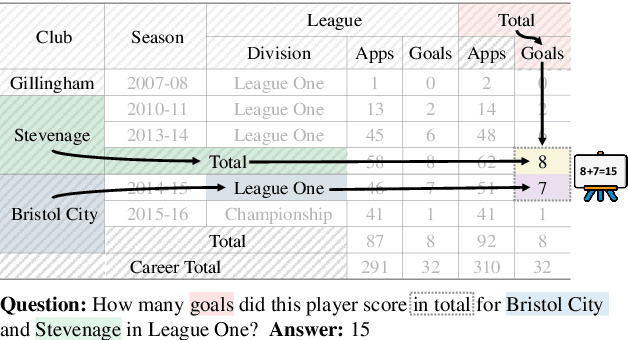
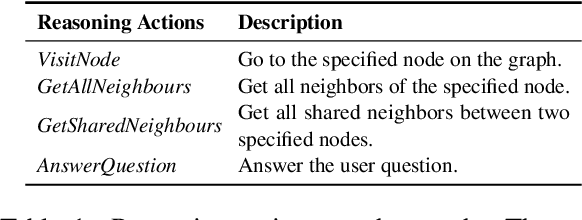
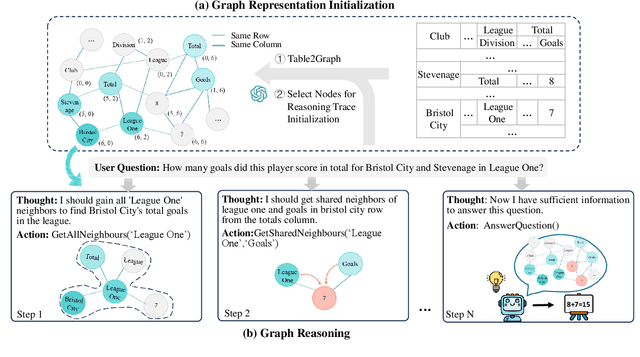

Abstract:Complex Table Question Answering involves providing accurate answers to specific questions based on intricate tables that exhibit complex layouts and flexible header locations. Despite considerable progress having been made in the LLM era, the reasoning processes of existing methods are often implicit, feeding the entire table into prompts, making it difficult to effectively filter out irrelevant information in the table. To this end, we propose GraphOTTER that explicitly establishes the reasoning process to pinpoint the correct answers. In particular, GraphOTTER leverages a graph-based representation, transforming the complex table into an undirected graph. It then conducts step-by-step reasoning on the graph, with each step guided by a set of pre-defined intermediate reasoning actions. As such, it constructs a clear reasoning path and effectively identifies the answer to a given question. Comprehensive experiments on two benchmark datasets and two LLM backbones demonstrate the effectiveness of GraphOTTER. Further analysis indicates that its success may be attributed to the ability to efficiently filter out irrelevant information, thereby focusing the reasoning process on the most pertinent data. Our code and experimental datasets are available at \url{https://github.com/JDing0521/GraphOTTER}.
 Add to Chrome
Add to Chrome Add to Firefox
Add to Firefox Add to Edge
Add to Edge